How to translate content in Translations Cloud using language macros
Translations for Confluence Cloud is neither an automatic nor a translation memory tool.
It is an app designed to manage different language versions of your content on a single Confluence page.
Video demonstrating how to use Translations for Confluence Cloud
To generate content in multiple languages, you can use our language macros. Depending on your company's policies, you can create translations through:
Internal creation
Collaboration with external translators
Utilization of Confluence's AI (refer below)
Tools such as Google Translate, DeepL, ChatGPT, or their respective applications.
Additionally, we suggest establishing a workflow framework for translations.
Using language macros to translate content
Navigate to a page that needs to be translated. Alternatively, create a new empty page to start from scratch.
Open the macro browser by typing "/" and the beginning of the first language. Choose the desired language.
Type your respective content into the language box. If you are working with existing text, simply drag your content into the language box. You may use any other macro within the language macro.
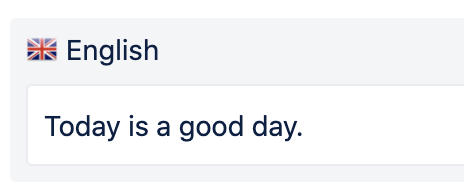
Open the macro browser again ("/) and start typing another language. Choose the desired language.
Type the translation of your content into the new language box.
Repeat until all languages are covered.
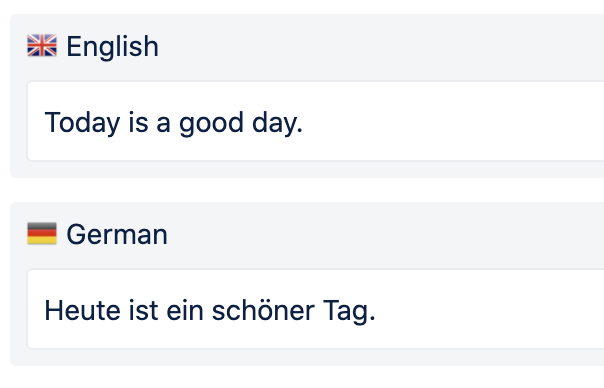
Save the page.
The content will now be displayed only in your selected language (see here for details).
Use the language drop-down if you want to see the other languages to check if everything looks correct.The language drop-down might not appear right after you publish the page. Please reload the page to make the drop-down appear.
It is not possible to translate the page titles on Confluence Cloud.
Translating with Atlassian Intelligence (AI)
Confluence AI now offers the ability to translate content directly within the page.
For additional details regarding Atlassian Intelligence Data Privacy and terms, please refer to the following link:
To begin translating
Highlight the content you want to translate (or use the macro shortcut: “/translate to...” to translate the whole page).
In the example below, we use a description of the Grand Canyon initially published in English.
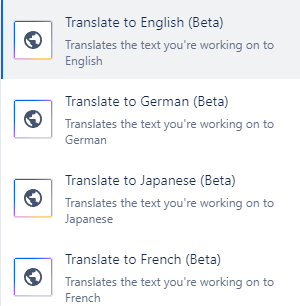
Step 1
Highlight the text you desire to translate, click the AI icon, and select or input your preferred language in the AI field.
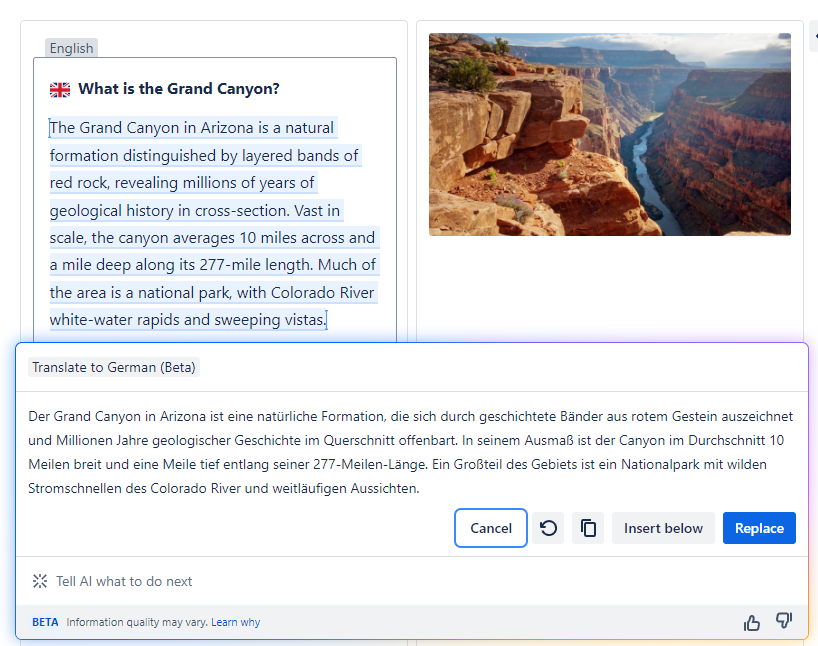
Step 2
Copy the translated output and place it on your desired language macro (ensure it's inside its language macro).
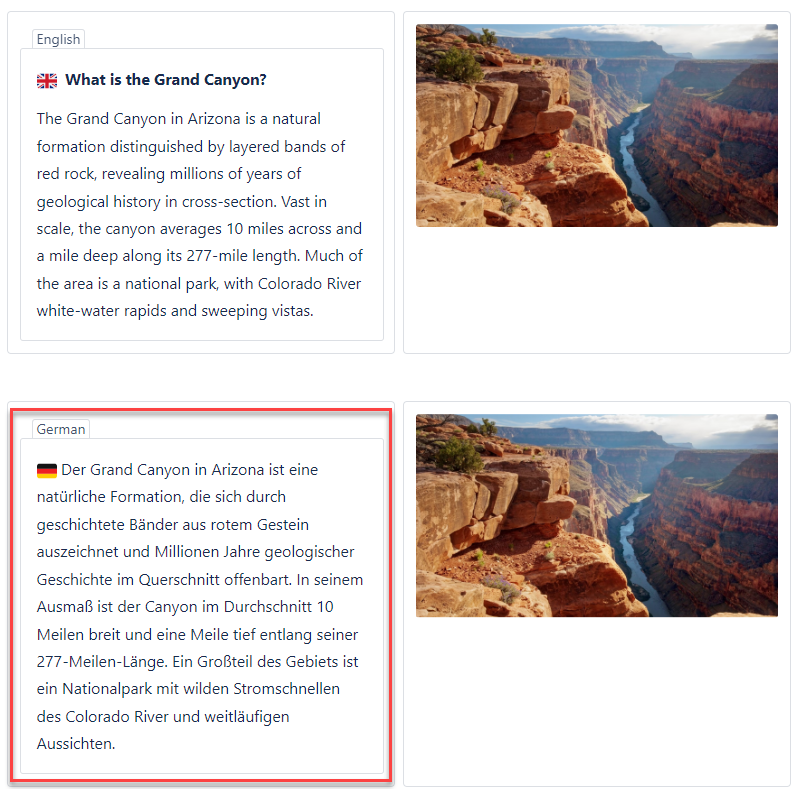
Step 3
Congratulations, you're finished! 🥳
Your content has been automatically translated, and you can easily switch between languages using the language dropdown menu.

Please note that the macro shortcut "/translate to..." is designed to translate the entire page contents. It may not function as expected if text is nested within macros.
List of language macros
There are around 40 languages that the app Translations for Confluence currently supports:
English (US)
English (GB)
English (Canadian)
Belarusian
Bulgarian
Catalan
Chinese
Croatian
Czech
Danish
Dutch
Estonian
Finnish
French (France)
French (Canadian)
German
Greek
Hindi
Hungarian
Icelandic
Indonesian
Irish
Italian
Japanese
Korean
Latvian
Lithuanian
Maltese
Norwegian (Bokmål)
Norwegian (Nynorsk)
Polish
Portuguese
Portuguese (Brasil)
Romanian
Russian
Serbian
Slovak
Slovenian
Spanish
Swedish
Thai
Turkish
Ukrainian
Vietnamese
